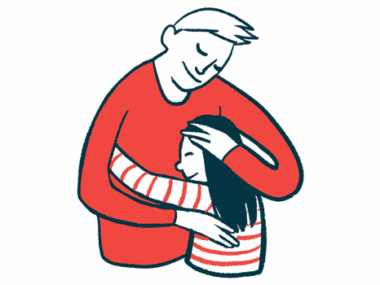Sleep duration, quality improves with behavioral intervention
18 children with Angelman syndrome took part in a program about sleep problems
Written by |

A tailored behavioral intervention program led to longer sleep time, better sleep habits, and improved quality of life in children with Angelman syndrome, a Dutch study reports.
The findings suggest “behavioral intervention has a positive and persistent effect on sleep problems in children with AS [Angelman symdrome],” the researchers wrote in the study, “Sleep problems in children with Angelman Syndrome: The effect of a behavioral intervention program,” which was published in Research in Developmental Disabilities.
Sleep problems are prevalent in Angelman syndrome, with up to 90% of patients affected, according to their parents. Poor sleep quality can greatly affect the quality of life of the entire family. Parents report difficulties with getting settled, taking long to fall asleep (long sleep onset latency), and waking up often during the night.
Sleep complications are typically reported in infancy and early childhood, but they can persist into adulthood. In previous research, parents considered sleep problems one of their most serious concerns with their Angelman children.
Both physical and behavioral factors are believed to play a role.
Several behavioral interventions have been developed to improve sleep for patients, but their effectiveness is not well established, leading researchers at the ENCORE Expertise Center for Neurodevelopmental Disorders, the Netherlands to investigate their effect.
Assessing impact of intervention on improving sleep
The study was confined to parents of children with genetically confirmed Angelman, ages 2 to 18, with sleep problems, defined as sleeping two hours less than normal, requiring more than normal rituals to fall asleep (such as having a bottle in bed or being rocked), and scoring higher than four in a composite sleep index that assesses problems with settling, nighttime waking, early waking, and co-sleeping.
Children were randomly assigned to either a behavioral intervention or a control group. The program lasted six weeks, with booster sessions at eight and 10 weeks that focused on preventing relapses. It was based on a standardized behavior protocol for children with developmental delays, but enriched for Angelman syndrome.
Both groups were assessed at the start of the program (baseline), and then at 12 and 26 weeks.
In the intervention group, parents received general information about sleep, sleep hygiene (good sleep habits), types of sleep problems, their possible causes and potential behavioral interventions. They were visited twice at home by a behavioral therapist, who provided personalized advice.
Good sleep habits, a bedtime routine, and sleep schedule were discussed with the parents over the phone. Parents were to fill out a sleep diary to help tailor the intervention.
The control group was given a report on the baseline assessment of sleep characteristics and general advice on sleep hygiene. At the study’s end, control parents received tailored sleep advice.
To measure sleep parameters — including total sleep time, waking after sleep, sleep onset latency and the number of awakenings — the researchers used actigraphy, a noninvasive wearable sensor to track activity and rest, and videosomnography, a video-based method to record and analyze sleep behaviors.
From 79 children eligible, 18 participated and were equally divided into the two groups.
At baseline, both groups had similar age, sex distribution, genetic defect, physical problems and sleep parameters, except for total sleep time of parents, which was significantly shorter in the intervention group.
Changes in sleep onset, total sleep time
From baseline to week 12, no significant changes of sleep parameters were seen between the groups. However, at week 26, sleep onset latency was significantly reduced (improved) in the intervention group compared to the controls, as measured by the parent diary and actigraphy. On videosomnography, waking after sleep onset was significantly better on week 12 and the number of awakenings was significantly better on week 26 in the intervention group.
Total sleep time stably improved from baseline to week 12 (a median of more than 43 minutes) and to week 26, a median of more than 15.8 minutes.
A significant reduction in nighttime parent visits was observed in the intervention group at week 26 (a mean of one less visit). No significant effect was observed on parental sleep parameters.
Although no significant changes were seen for sleep hygiene between both groups, the intervention group had a significant improvement by weeks 12 and 26 compared with baseline, as measured with the Children’s Sleep Hygiene Scale. No improvements were seen in the control group.
The Infant Toddler Quality of Life Questionnaire showed a positive change in the intervention group at both weeks 12 and 26 regarding parental impact, which refers to the amount of worry and time limitations the parent had because of their child’s problems.
An improvement on the Combined Behavior scale, which refers to behavioral problems such as not following directions, hitting, biting, and throwing tantrum, also was seen in the intervention group.
No significant difference was seen between the groups in the 36-Item Short Form Health Survey. However, a positive impact in vitality, mental health, and social functioning was seen in the intervention group by week 12. Improvements in vitality were sustained by week 26, but no effects were observed for the control group.
These findings suggest “behavioral intervention has a positive and persistent effect on total sleep time and wake after sleep onset in children with AS, on sleep hygiene and several quality of life domains of child and parents,” the researchers wrote. “We advise a stepped-care approach to diminish sleep problems in children with AS.”
They said this should “include psycho-education on sleep for all parents, evaluation of sleep behavior by a behavioral therapist with videosomnography followed by individual behavioral advice and the use of specific behavioral techniques in children with respectively moderate and more severe sleep problems.”






